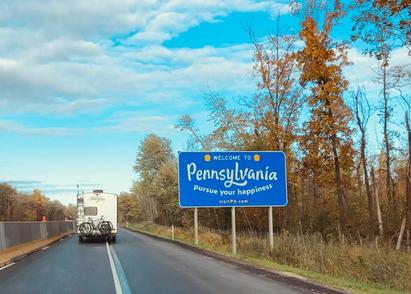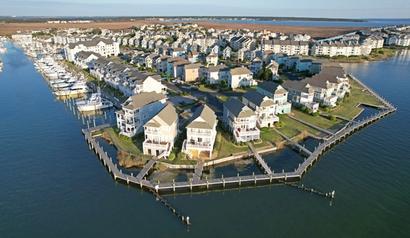VA Funding Fees: What Are They and How Much Do They Cost?
Written by:
Lauren Hargrave
Lauren Hargrave
Personal Finance Writer
Lauren Hargrave is a writer from San Diego who focuses on technology, finance, and healthcare. She worked in finance for seven years before pivoting to a career in writing, and now, instead of putting numbers into spreadsheets, she writes about them instead.
See full bio
Fact Checked by:
Dan Silva
Dan is the Vice President of Marketplace Lending at Own Up. Throughout his career, he has held executive leadership positions in the mortgage and banking industry.
See full bio

A loan that is either directly funded by or backed by the U.S. Department of Veterans Affairs (VA) can be a great way for eligible veterans, active duty military, and National Guard and Reserve members to fund a home purchase. That’s because almost 90% of VA-backed home loans receive funding without the need for a down payment and are often offered with better terms than the lender would offer a borrower who didn’t qualify for this type of mortgage.
Home loans that are directly funded by or backed by the VA function similarly to other types of home loans, but with an exception: Most borrowers who are eligible for a VA home loan will be required to pay a funding fee at closing. In this post, we’ll discuss the ins and outs of a VA funding fee, including who must pay it, how much it can cost, and its purpose.
What is a VA Loan?
A VA loan is a loan that is either funded by the VA itself or partially guaranteed by the VA. When a loan is partially guaranteed–or “backed” by the VA, that means in the event of a foreclosure, the VA guarantees the lender that the department will repay the portion of the loan they guaranteed. Since this lowers the risk of lending money for the private lender, they often offer VA-backed loans at more attractive terms than they would if the loan didn’t receive the VA’s backing.
Types of VA loans
The types of VA loans that are available are:
- A purchase loan. This is a VA-backed loan that can be used to purchase a home.
- A Native American Direct Loan (NADL). This is a VA-funded loan that is available for Native American Veterans or Veterans who are married to a Native American, and who are buying, building, or improving a home on Federal Trust land.
- An Interest Rate Reduction Refinance Loan (IRRRL). This is a VA-backed loan that can be used to refinance an existing VA-backed loan in order to achieve a lower interest rate.
- A VA Cash-out Refinance Loan. This is a VA-backed loan that can be used for refinancing and to cash in on your home equity.
In order to receive a VA-backed loan, a borrower must apply for a Certificate of Eligibility (COE) through the VA. The borrower will then bring the certificate with them to apply for their loan.
Who is Eligible for a VA Loan?
To qualify for a VA-backed home loan or an NADL, you must meet the service history and duty status requirements that are based on when you served in the military. If you are an active duty service member, you must have served for 90 days in order to take advantage of one of these loan programs. Survivors of fallen service men and women are also eligible to receive a VA loan.
If you don’t meet the service or active duty requirements, you may still be able to retrieve a COE if certain conditions apply to you. See this page on the VA website for information.
How Much do VA Loans Cost?
The costs associated with taking out a VA home mortgage include:
- The interest rate the lender charges on the loan amount
- The discount points (if any) the borrower decides to cover. Discount points are interest charges a borrower can pay up front in exchange for a lower interest rate throughout the loan term.
- The VA funding fee
- A loan origination fee
- The cost of running the borrower’s credit report
- The VA appraisal fee
- Prepaid homeowner’s insurance and real estate taxes
- The title insurance fee
- Any state and local taxes
- Recording fees
What are VA Funding Fees?
VA funding fees are the fees charged by the VA to a borrower who is taking out a VA loan. These fees are calculated as a percentage of the loan amount and can either be:
- Paid in cash at closing
- Included in the loan amount and paid off over time as part of the borrower’s monthly mortgage payments
There are pros and cons to each way of paying for the VA funding fee.
Paying the Funding Fee Up Front
The pros of paying for the fee upfront are:
- You don’t have to pay interest on the fee payment.
- You maintain more equity in your home.
The con of paying for the fee upfront is:
- It may require more cash than you have saved.
Rolling the Funding Fee Into the Mortgage
The pro of rolling the funding fee into the mortgage amount is:
- It reduces the amount of cash the borrower must have saved in order to purchase their home.
The cons to rolling the funding fee into the mortgage amount are:
- The borrower ends up paying interest on the funding fee, which increases the total cost of the funding fee.
- It diminishes the borrower’s equity in their home. In cases where the borrower doesn’t put down a down payment, the value of the home can end up being less than the total loan amount.
How Much are VA Funding Fees?
If you take out a VA mortgage loan, the funding fees you’re charged will depend on the following factors:
- The loan amount
- The amount of your down payment
- Whether or not this is the first time you’ve accessed a VA loan
- The type of loan you are trying to obtain
For instance, if you are accessing a VA home loan for the first time, you’re securing a VA-backed loan, and you’re putting down a down payment of 5% of the purchase price or less, your funding fee will be calculated as 2.15% of the loan amount. But if you put down a down payment of 10% or more, your VA loan funding fee would be 1.25% of the loan amount. This page on the VA website has a chart showing the different funding fee percentages for each borrower scenario.
What are VA Funding Fees Used for?
Since the VA is a federal department, it’s funded by federal tax payments. Any money the VA guarantees and has to repay the lender in the event of a foreclosure is paid for using taxpayer funds. By collecting funding fees, the VA helps to offset the cost to the taxpayer of repaying the VA-backed loans that go into default.
Do I Have to Pay VA Funding Fees?
Not everyone has to pay a VA funding fee when they take out a VA loan. Some circumstances allow for VA funding fee exemptions. If any of the following scenarios apply to you, your funding fee could be waived:
- You’ve received VA compensation for a service-connected disability.
- You’re eligible to receive VA compensation for a service-connected disability, but you’re receiving retirement or active-duty pay instead.
- You’re receiving Dependency and Indemnity Compensation (DIC) as a surviving spouse of a veteran.
- You’re a service member who has received a proposed or memorandum rating before the loan’s closing date that says you’re eligible to receive compensation because of a predischarge claim.
- You’re a service member on active duty who before or on the loan closing date provides evidence before or on the loan closing date of receiving a Purple Heart.
In some cases, the seller can pay for the funding fee as long as the total seller concessions (i.e. the costs the seller is paying on behalf of the homebuyer) don’t exceed 4% of the loan amount.
Are Funding Fees Refundable?
If you paid a funding fee at loan closing, you could be eligible for a funding fee refund if you were later awarded VA compensation for a service-connected disability, as long as the effective date of your compensation is retroactive to before the loan closing. If you think you’re eligible for a funding fee refund, contact the VA at 1-877-827-3702.
The Bottom Line
A VA-direct or backed loan can be a more affordable way for eligible veterans, active duty military, National Guard and Reserve members, and their survivors to secure a home mortgage. VA loans are often granted to borrowers with low or no down payments and at better terms than borrowers would be able to access through a traditional home lending process. In exchange for access to these affordable loans, most VA borrowers pay a funding fee to help offset the cost of running this program.
Frequently Asked Questions
Is the VA Funding Fee Different from Private Mortgage Insurance?
Yes. In fact, borrowers of VA loans do not have to pay for private mortgage insurance, no matter the amount of their down payment. Instead, the funding fee is meant to offset the cost to the VA to guarantee a portion of their mortgage.
How Much is the VA Funding Fee?
The fee is charged as a percent of the loan amount, and that percentage ranges from 0.5% to 3.6%, depending on whether or not you have accessed a VA loan before, how much of a down payment you are paying, and the type of loan you are securing.
Can Anyone Access a VA Loan?
No. The VA home loan program is for those who have a record of military service. Specifically, VA loans are only for veterans, active duty military, National Guard and Reserve members, and survivors of veterans.
Additional Resources
For more information on VA loans, visit the VA website or call the VA directly at 1-800-698-2411.


